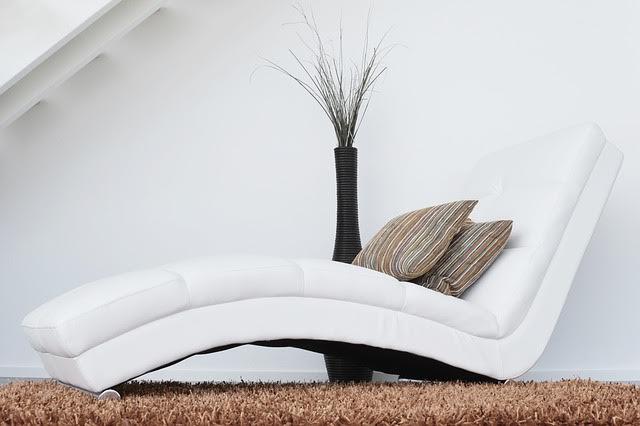
You worked hard for the furniture in your home so naturally you want to keep it looking its best as long as possible. Unfortunately, upholstery can be tricky to clean, especially if you have children or pets. Even every day dust, wear and tear can make our furniture look old and uninviting, so how can we spruce it up without damaging the upholstery?
Depending on the fabric of your favorite sectional or living chair, there are a ton of easy and effective solutions to keeping it clean. In this article we’ll explain the dos and don’ts of safely renewing your furniture.
Vacuum Your Furniture Regularly
If you vacuum your carpets weekly or biweekly, add your upholstery to the list. About once a week it needs a quick once-over with an appropriate vacuum attachment, especially in cracks and crevices. Do your home a service by removing all the cushions first and really making sure there are no crumbs or coins stuck in the corners of your couch.
For extra points, use a bristle brush on your furniture before vacuum to uproot ingrained dirt and dust particles.
It’s important to regularly clean your furniture upholstery because the oils, dust and debris will break fibers down over time, fading the color and dulling the texture of your furniture until there’s nothing left. Regular vacuuming keeps the majority of these damages to a minimum.
Treat Stains Quickly
If your toddler just spilled juice on your sofa, clean it up fast before it sets! Blot the area first with a dry, dye-free towel to remove excess before applying any solution.
Determine the material your furniture is upholstered with to select the best kind of cleaning solution. If you check the tag, you may see letters representing which cleaners the manufacturers suggest. Here is what the letters mean:
- W on furniture which uses water-based cleaning solutions
- S requires a water-free cleaning solution
- WS means you can use either water-based or water-free solutions
- X implies the furniture requires professional attention or dry-cleaning
- O is for organic fibers which must be washed in cold water with gentle solutions
Once you know what kind of solution to use on your furniture, you can by pre-made detergents or make your own water-based solutions at home. An excellent universal cleaner for furniture with a W or WS tag can be made with this popular recipe:
- Add ¼ cup natural dishsoap to 2 cups warm water
- Use an electric mixer on the liquid until it becomes a thick foam
- Apply the foam to your food, beverage or pet stain with a gentle brush or soft towel
- Remove the foam after a minute and hit the spot again with a little warm water before blotting dry
Call the Professionals
When you’re really interested in extending the life of your beloved furniture, you understand that sometimes we need to break down and call the professionals. About once every 18 months fine upholstery should be treated by a professional cleaning crew who will use industrial tools and solutions to get the places vacuums just can’t reach. A+ Carpet Cleaning offers a variety of cleaning services, including a package to help rejuvenate your upholstery.
Regular cleanings keep your furniture smelling fresh and looking sprite with less maintenance in-between visits for you! It’s surprisingly affordable and will add years of use to your furniture.
Treating Leather
Leather furniture can be very difficult to keep up as it faces scratches and drying. Always keep your leather out of the sun to avoid cracking, and treat the leather regularly to clean and condition.
Clean your leather with a simple and non-abrasive solution of equal part water and white vinegar. Use a damp towel with this solution to wipe over your leather furniture after it’s been vacuumed to remove dirt and grease. To condition, use a similar solution of one part white vinegar and 2 parts linseed oil every 6-12 months depending on how dry your climate is.
Take Care of Your Upholstery
Taking a few short moments now to clean and maintain your upholstery will go a long way in the future when you’re still sitting on your beautiful microfiber chaise. Remember to always test any solution, no matter how seemingly benign, on a hidden sample of your upholstery before applying it everywhere.


















